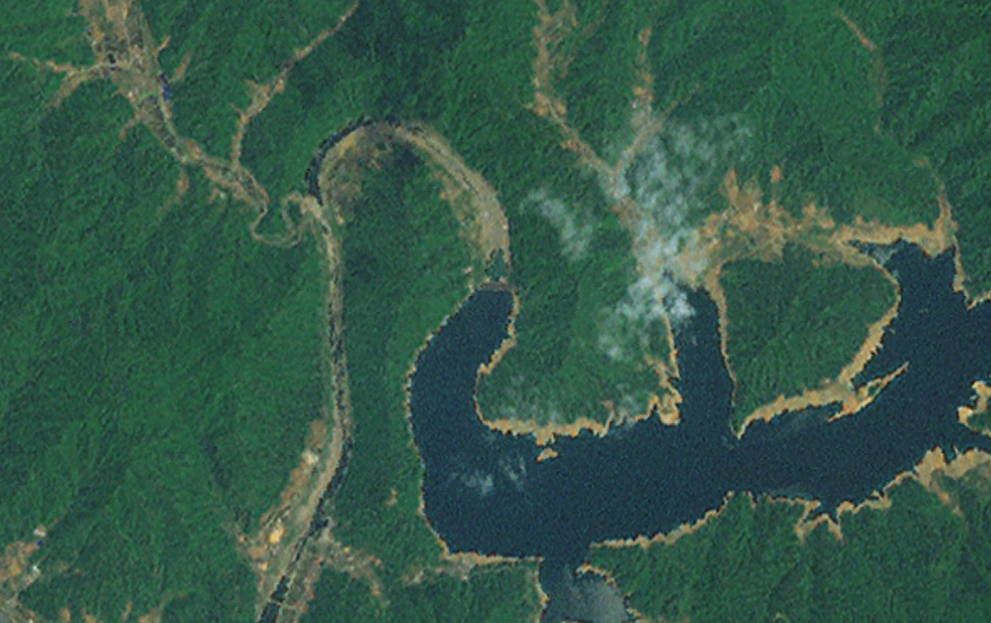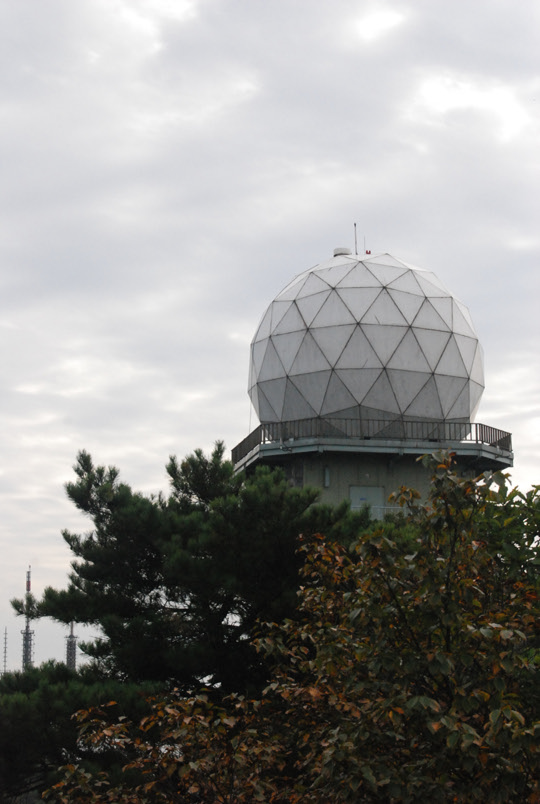|
Hwacheon
Hwacheon County (''Hwacheon-gun'') is a county in Gangwon Province, South Korea. The northern border is, in some places, within nine kilometres of the Korean Demilitarized Zone. Neighboring counties are Cheorwon to the northwest and north, Yanggu to the east, Chuncheon to the south, and the Gyeonggi-do province to the southwest. The county consists largely of mountains and rivers, between which are small farming communities, military bases and military training grounds. The area is renowned for its rivers, lake trout, indigenous otters, and natural scenery. Demographics As of 2005, the population of Hwacheon stood at 23,822. 12,471 of these people were male; 11,351 were female. Only 90 of these people (0.38%) were foreign residents - 20 male and 70 female. The average household was home to 2.4 people, and 3,577 of the population (15%) was aged 65 or older. These numbers do not reflect soldiers stationed in the area, which are estimated at approximately 35,000 personnel. History ... [...More Info...] [...Related Items...] OR: [Wikipedia] [Google] [Baidu] |
Hwacheon Dam
Hwacheon Dam is a concrete gravity dam on the North Han (Pukhan) River in Hwacheon County, Gangwon-do Province, South Korea. The dam was completed in 1944 as a primary source of electricity in southern Korea. It was the focal point of a raid during the Korean War and also provides flood protection from North Korea's Imnam Dam upstream. Background The dam was constructed by the Japanese during their occupation of Korea in World War II. The Han River Hydroelectric Company began construction in July 1939 and the dam was complete in October 1944. Several months prior in May, the first generator of the power plant was operational, the second that October. The third generator was operational in 1957 and the last of the four generators was installed in 1968. Before the upstream Peace Dam was completed in 2005, the Hwacheon Dam served as the first line-of-defense for a collapse or excess discharge from the Imnam Dam in North Korea. Korean War raid At midnight 8 April 1951, North K ... [...More Info...] [...Related Items...] OR: [Wikipedia] [Google] [Baidu] |
Gangwon-do (South Korea)
Gangwon Province is a province of South Korea, with its capital at Chuncheon. It is bound on the east by the Sea of Japan, and borders Gyeonggi Province to its west, North Gyeongsang Province and North Chungcheong Province to its south, and the Military Demarcation Line to the north, separating it from North Korea's Kangwŏn Province. Before the division of Korea in 1945 Gangwon and Kangwŏn Provinces formed a single province. Pyeongchang County in Gangwon hosted the 2018 Winter Olympics and 2018 Winter Paralympics, with Gangwon hosting the 2024 Winter Youth Olympics. History Gangwon-do was one of the Eight Provinces of Korea during the Joseon Dynasty, formed in 1395, deriving its name from the names of the principal cities of Gangneung () and the provincial capital Wonju (). In 1895 Gangwon-do was replaced by the Districts of Chuncheon (''Chuncheon-bu;'' ) in the west and Gangneung (''Gangneung-bu;'' ) in the east, with Wonju becoming a part of Chungju Distric ... [...More Info...] [...Related Items...] OR: [Wikipedia] [Google] [Baidu] |
Ice Fishing
Ice fishing is the practice of catching fish with lines and fish hooks or spears through an opening in the ice on a frozen body of water. Ice fishers may fish in the open or in heated enclosures, some with bunks and amenities. Shelters Longer fishing expeditions can be mounted with simple structures. Larger, heated structures can make multiple day fishing trips possible. A structure with various local names, but often called an ice shanty, ice shack, fish house, shack, icehouse, bobhouse, or ice hut, is sometimes used. These are dragged or towed onto the lake using a vehicle such as a snowmobile, ATV or truck. The two most commonly used types are portable and permanent. The portable houses are often made of a heavy material that is usually watertight. The two most common types of portable houses are those with a shelter that flips behind the user when not needed, or pop up shelters with a door as the only way out. The permanent shelters are made of wood or metal and usual ... [...More Info...] [...Related Items...] OR: [Wikipedia] [Google] [Baidu] |
Korean War
{{Infobox military conflict , conflict = Korean War , partof = the Cold War and the Korean conflict , image = Korean War Montage 2.png , image_size = 300px , caption = Clockwise from top:{{Flatlist, * A column of the U.S. 1st Marine Division's infantry and armor moves through Chinese lines during their breakout from the Chosin Reservoir * UN landing at Incheon harbor, starting point of the Battle of Incheon * Korean refugees in front of a U.S. M46 Patton tank * U.S. Marines, led by First Lieutenant Baldomero Lopez, landing at Incheon * F-86 Sabre fighter aircraft , date = {{Ubl, 25 June 1950 – 27 July 1953 (''de facto'')({{Age in years, months, weeks and days, month1=6, day1=25, year1=1950, month2=7, day2=27, year2=1953), 25 June 1950 – present (''de jure'')({{Age in years, months, weeks and days, month1=6, day1=25, year1=1950) , place = Korean Peninsula, Yellow Sea, Sea of Japan, K ... [...More Info...] [...Related Items...] OR: [Wikipedia] [Google] [Baidu] |
Seocho-gu
Seocho District () is one of the 25 '' gu'' (local government districts) which make up the city of Seoul, South Korea. Seocho is generally referred to as a part of Greater Gangnam Area, along with Gangnam District. As of 2022, Seocho District ranks as the richest neighborhood in South Korea and among the most expensive areas in Seoul with an average sales price of 47.75 million South Korean won per 3.3 square meters. South Korea's rich are concentrated in the three Gangnam districts including Seocho, known as Gangnam School District Eight(강남 8학군). Seocho District is served by the Seoul Subway Line 2, Line 3, Line 4, Line 7, Bundang Line, Line 9, and Shinbundang Line. South Korea's longest highway, Gyeongbu Expressway, ends here. The most crowded area in Korea, Gangnam-daero Gangnam Station is located in Seocho District and half of this place's administration is managed by this district. Administration In South Korea, there are two types of ''dong'' or neigh ... [...More Info...] [...Related Items...] OR: [Wikipedia] [Google] [Baidu] |
List Of Counties In South Korea
List of all counties in South Korea: There are 82 counties in South Korea since Cheongwon County was dissolved on July 1, 2014 and consolidated by Cheongju. Dissolved counties ;1946 * Cheongju County * Chuncheon County * Yeongpyeong County ;1949 * Yeosu County ;1952 * Gangreung County * Gyeongju County * Wonju County ;1956 * Chungju County ;1963 * Cheongan County ;1973 * Bucheong County * Dongrae County ;1980 * Jecheong County ;1988 * Gwangsan County ;1989 * Chunseong County * Daedeok County * Siheung County * Wolseong County * Wonseong County ;1992 * Goyang County ;1995 * Asan County * Boryeong County * Changwon County * Cheonan County * Chuncheon County * Geoje County * Geumreung County * Gimhae County * Gimje County * Gongju County * Gwangyang County * Gyeongju County * Gyeongsan County * Iksan County * Jecheon County * Jeongeup County * Jinyang County annexed by Jinju * Jungwon County annexed by Chungju * Miryang County * Mungyeong County * Myeongju Cou ... [...More Info...] [...Related Items...] OR: [Wikipedia] [Google] [Baidu] |
Seoul
Seoul (; ; ), officially known as the Seoul Special City, is the Capital city, capital and largest metropolis of South Korea.Before 1972, Seoul was the ''de jure'' capital of the North Korea, Democratic People's Republic of Korea (North Korea) as stated iArticle 103 of the Constitution of North Korea, 1948 constitution. According to the 2020 census, Seoul has a population of 9.9 million people, and forms the heart of the Seoul Capital Area with the surrounding Incheon metropolis and Gyeonggi Province, Gyeonggi province. Considered to be a global city and rated as an Alpha – City by Globalization and World Cities Research Network (GaWC), Seoul was the world's List of cities by GDP, fourth largest metropolitan economy in 2014, following Tokyo, New York City and Los Angeles. Seoul was rated Asia's most livable city with the second highest quality of life globally by Arcadis in 2015, with a List of South Korean regions by GDP, GDP per capita (PPP) of around $40,000. With ma ... [...More Info...] [...Related Items...] OR: [Wikipedia] [Google] [Baidu] |
Korea Meteorological Administration
The Korea Meteorological Administration () (KMA) is the national meteorological service of the Republic of Korea. The service started in 1904 joining the WMO in 1956. Numerical Weather Prediction is performed using the Unified Model software suite. History The current Administration was established in 1990. Temporary observatories set up in 1904 in Busan, Incheon, Mokpo and elsewhere were precursors to the current KMA. The Central Meteorological Office (CMO) was established in August 1949. In April 1978, CMO was renamed the Korea Meteorological Service(KMS). In 1999, the Administration introduced a meteorological supercomputer for forecasting. As of November 2021, supercomputers ''Guru'' and ''Maru'' ranked 27th and 28th respectively in the world. In 2010, the KMA launched South Korea’s first geostationary meteorological satellite, the Communication, Ocean and Meteorological Satellite (COMS), also known as Chollian. Chollian started its official operation in 2011. The Seou ... [...More Info...] [...Related Items...] OR: [Wikipedia] [Google] [Baidu] |
Rice
Rice is the seed of the grass species '' Oryza sativa'' (Asian rice) or less commonly '' Oryza glaberrima'' (African rice). The name wild rice is usually used for species of the genera '' Zizania'' and ''Porteresia'', both wild and domesticated, although the term may also be used for primitive or uncultivated varieties of '' Oryza''. As a cereal grain, domesticated rice is the most widely consumed staple food for over half of the world's human population,Abstract, "Rice feeds more than half the world's population." especially in Asia and Africa. It is the agricultural commodity with the third-highest worldwide production, after sugarcane and maize. Since sizable portions of sugarcane and maize crops are used for purposes other than human consumption, rice is the most important food crop with regard to human nutrition and caloric intake, providing more than one-fifth of the calories consumed worldwide by humans. There are many varieties of rice and culinary preferences t ... [...More Info...] [...Related Items...] OR: [Wikipedia] [Google] [Baidu] |






